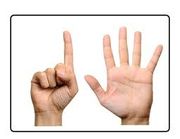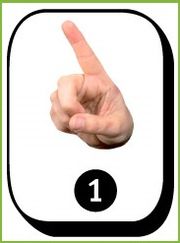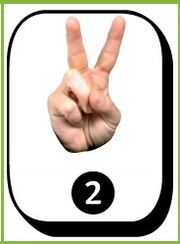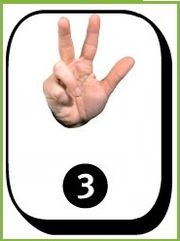Difference between revisions of "How to Count in Ancient Indo-European Language"
Jump to navigation
Jump to search
(upload images) |
|||
| Line 1: | Line 1: | ||
{{Inuse|2014-03-25|Admin}} | {{Inuse|2014-03-25|Admin}} | ||
Ancient Indo-European language is a hypothetical language which is the mother and the root of many modern languages from Bengal to Iceland and from Sweden to Sicily. That language takes you back to tribes living 3000 to 4000 years ago or even older. There is no documents from them, but certain scholars whom are called "linguists" have traced back a number of languages and re-built the ancient Indo-European. It is excitingly exotic to know how those ancient people could count objects. | [[Image:IndEurIntro.jpg|180px|right]]Ancient Indo-European language is a hypothetical language which is the mother and the root of many modern languages from Bengal to Iceland and from Sweden to Sicily. That language takes you back to tribes living 3000 to 4000 years ago or even older. There is no documents from them, but certain scholars whom are called "linguists" have traced back a number of languages and re-built the ancient Indo-European. It is excitingly exotic to know how those ancient people could count objects. | ||
[[Category:Humanities]] | [[Category:Humanities]] | ||
== Steps == | == Steps == | ||
# Learn from one to nine, | # [[Image:IndEur_1.jpg|180px|right]]Learn from one to nine, | ||
#* One : '''Oinos''' also '''ei''' (he shows one of his fingers and says, "that") | #* One : '''Oinos''' also '''ei''' (he shows one of his fingers and says, "that") | ||
#* Two : '''Dowu''' (he shows one finger from each hand and says, "those") | #* Two : '''Dowu''' (he shows one finger from each hand and says, "those") | ||
| Line 13: | Line 17: | ||
#* Eight : '''Oktou''' (he says, "I hide two fingers of my hands") | #* Eight : '''Oktou''' (he says, "I hide two fingers of my hands") | ||
#* Nine : '''Enewen''' (he says, "I hide one of the fingers of my hands") | #* Nine : '''Enewen''' (he says, "I hide one of the fingers of my hands") | ||
# Learn more numbers. It is not certain where in each modern "daughter language" all numbers come from. But certain numbers are known how they were at that time. | # [[Image:IndEur_2.jpg|180px|right]]Learn more numbers. It is not certain where in each modern "daughter language" all numbers come from. But certain numbers are known how they were at that time. | ||
#* Ten : '''dekm''' (It means, "(all) fingures") | #* Ten : '''dekm''' (It means, "(all) fingures") | ||
#* Eleven : '''eiliekwdekm''' (It means, "one after you put your ten fingures behind") Listen carefully to it: It sounds ei-left-ten | #* Eleven : '''eiliekwdekm''' (It means, "one after you put your ten fingures behind") Listen carefully to it: It sounds ei-left-ten | ||
| Line 21: | Line 25: | ||
#* Hundred : '''kmtorathjan''' (It means, "count ten, ten times") | #* Hundred : '''kmtorathjan''' (It means, "count ten, ten times") | ||
#* Thousand : '''teu-kmtorathjan''' (It means, "many hundred") | #* Thousand : '''teu-kmtorathjan''' (It means, "many hundred") | ||
#Learn few more words: | # [[Image:IndEur_3.jpg|180px|right]]Learn few more words: | ||
#* Mother : '''mater''' (ma, baby asks for food) | #* Mother : '''mater''' (ma, baby asks for food) | ||
#* Father : '''paeter''' (pa or ba, father, tapping his index finger on his lower lip creating an exploding bilabial frequent b or p calls the '''ba'''by) | #* Father : '''paeter''' (pa or ba, father, tapping his index finger on his lower lip creating an exploding bilabial frequent b or p calls the '''ba'''by) | ||
| Line 28: | Line 32: | ||
#* Head : '''kaput''' | #* Head : '''kaput''' | ||
#* Love : '''leubh''' (bh, similar to Celtic ''v'') | #* Love : '''leubh''' (bh, similar to Celtic ''v'') | ||
== Related How To's == | == Related How To's == | ||
Revision as of 04:28, 6 April 2014
Ancient Indo-European language is a hypothetical language which is the mother and the root of many modern languages from Bengal to Iceland and from Sweden to Sicily. That language takes you back to tribes living 3000 to 4000 years ago or even older. There is no documents from them, but certain scholars whom are called "linguists" have traced back a number of languages and re-built the ancient Indo-European. It is excitingly exotic to know how those ancient people could count objects.
Steps
- Learn from one to nine,
- One : Oinos also ei (he shows one of his fingers and says, "that")
- Two : Dowu (he shows one finger from each hand and says, "those")
- Three : Trei (he says, "I have not more than two hands; hence many")
- Four : Kwetwer (he says, two and two)
- Five : Penkue (my fist, palm, open hand, pat)
- Six : Sweks, seks (my fist and one additional finger over it)
- Seven : Septm (he says, "I hide three fingers of my hands")
- Eight : Oktou (he says, "I hide two fingers of my hands")
- Nine : Enewen (he says, "I hide one of the fingers of my hands")
- Learn more numbers. It is not certain where in each modern "daughter language" all numbers come from. But certain numbers are known how they were at that time.
- Ten : dekm (It means, "(all) fingures")
- Eleven : eiliekwdekm (It means, "one after you put your ten fingures behind") Listen carefully to it: It sounds ei-left-ten
- Tweleve : dowuliekwdekm
- Note that in English and many other languages -liekw, that is, "left (behind)" has disappeard after twelve. They simply say thirteen which means three and ten, but in some others it continues up to nineteen. In Latin, eighteen and nineteen are similar to eight and nine in being twenty less two and twenty less one, respectively
- Twenty : dowudekmtmi (It means two-ten)
- Hundred : kmtorathjan (It means, "count ten, ten times")
- Thousand : teu-kmtorathjan (It means, "many hundred")
- Learn few more words:
- Mother : mater (ma, baby asks for food)
- Father : paeter (pa or ba, father, tapping his index finger on his lower lip creating an exploding bilabial frequent b or p calls the baby)
- Daughter : dhugheter (gh, similar to French r)
- Son : sunus
- Head : kaput
- Love : leubh (bh, similar to Celtic v)
Related How To's
Sources and Citations
- Webster's New World Dictionary of the American Language, David B. Guralnik, Second College Edition, 1970, The World Publishing company, NY., US.




